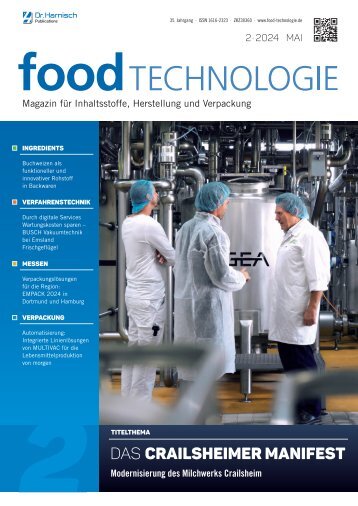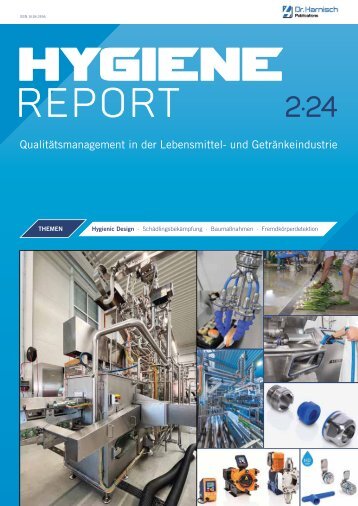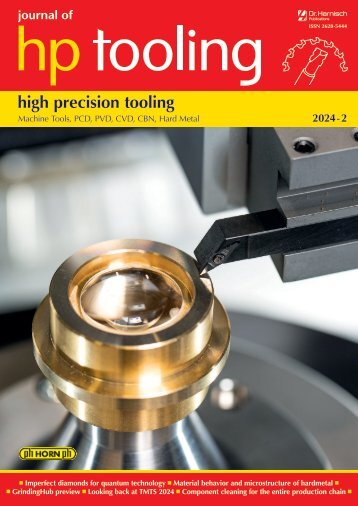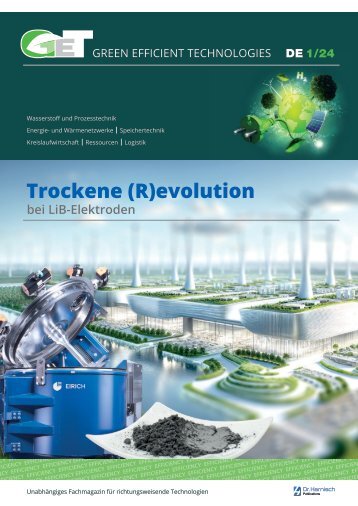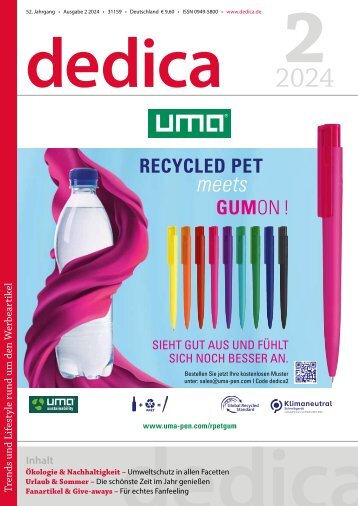GET – GREEN EFFICIENT TECHNOLOGIES – English Language
- Text
- Harnischcom
- Materials
- Valve
- Electricity
- Grid
- Valves
- Technologies
- Efficient
- Pumps
- Hydrogen
- Efficiency
Leading article The
Leading article The hydrogen society Prof. Dr.-Ing. Eberhard Schlücker Right now, hydrogen is the word I encounter most often in my profession while the term “hydrogen society” is rarely heard. The defining topics are the numerous essential issues of the energy supply, the conversion of industry to hydrogen and where to obtain this at low cost. Competition is already entering the discussion again. First 2 euros per kg was publicised, now Australia wants to deliver hydrogen for 1.50 euros per kg. The transport form is always ammonia, a good basic material for various chemicals in the chemical industry. Meanwhile, splitting off the hydrogen again with the use of energy (1) for delivery in its pure form also works well. Separating hydrogen that, for example, is sent through pipelines mixed with natural gas is also working very well now with the use of membrane technology (2). Thus import and transport appear to be resolved, especially since around 90% of our natural gas pipelines in Germany are suitable for hydrogen and mixtures containing hydrogen. Countries close to the equator naturally have the most favourable solar conditions for hydrogen production. Importing energy therefore appears sensible. However, a discussion about efficiency factors and the climate impact of hydrogen is sometimes lacking. For example, the heat generated during ammonia production, waste heat to a large extent, remains unused in the production country. The final efficiency factor is likely below 50%. This also means that while the ammonia is inexpensive, the climate impact is the same as if we were producing it here. There is another aspect as well, which is rarely discussed. When hydrogen is released into the atmosphere, it goes up. In the troposphere, it finds methane cracked by the sun, which it repairs, thus allowing it to do damage for an additional year. Hydroxidion, which is also produced from water by the sun, turns back to water and thus loses its purifying effect on the atmosphere, just like ozone in the troposphere. Ozone is also broken down and turned into water in the stratosphere, especially in the polar regions with the aid of polar wind. That could lead to more cloudiness. Thus we alter the climate with hydrogen as well. This means it should not be released into the atmosphere. We should therefore do it right this time and simultaneously strive for a very good energy balance and efficiency factors. Maximum efficiency factors as a social objective We have to pay attention to efficiency factors. When hydrogen gas is compressed to approximately 350 bar, about 20 % of the hydrogen’s energy content is used for this compression. From this perspective, a filling station supply chain (compression, transportation, decanting, cooling to -40 °C, compression to 700 bar) has a final efficiency factor of merely 20–30 %. Assuming the vehicle is equipped with a PEM fuel cell, its efficiency factor is only about 50 %. Therefore, a mere 10 to 15 % of the energy contained in hydrogen is actually utilised! This is not the way to manage our future energy carrier. Hydrogen gas should not be transported like oil. Especially since transportation is always associated with the risk of accidents and leaks, and we cannot build pipelines all over the place. Furthermore, even though Toyota has meanwhile launched an exchangeable cartridge in the market, the vehicle market will be dominated by batteries over the medium term. This considerably improves the overall efficiency. New, low-lithium or lithium-free designs with a higher storage density are also on the horizon in battery development (for example, solid oxide batteries, nano-batteries). Thus we are only talking about hydrogen in the context of industry, where it is needed for processes and chemical products. Since electricity is the highest form of energy, everything else is done with electricity to the greatest possible extent and hydrogen is merely an electricity conversion product. Anything else is then energy storage in times of excess to cover future shortages. Domestic hydrogen production? That being said, we need to ask if we fundamentally want to import everything or whether producing hydrogen here in Central Europe could also pay off. Since electricity, the basis for hydrogen, depends on space going forward, anyone with a roof or other another usable space or area could produce hydrogen. It has been shown that 10 KWp PV is, on average, sufficient to meet the annual demand for a detached house (4 people) with storage. This resource becomes even more attractive considering that PV efficiency factors will keep improving (currently 20 %, 24-40 % in a few years). Villages and perhaps even towns could therefore supply themselves in the future. Only with storage, of course, since PV yields are considerably less in winter than summer. The storage medium has to be safe, non-combustible, non-toxic and easy to manage. Such storage media include LOHCs (liquid organic hydrogen carriers) on the basis of butyltoluene or dibenzyltoluene (cannot be ignited even with a welding torch) and the magnesium hydride “power paste” developed by Fraunhofer (Dresden). Both have a similar storage density (LOHC 2.1 KWh/kg, MgH 2 1.6 KWh/kg). LOHCs need heat to separate the hydrogen. Magnesium hydride merely has to be wetted with water to release the hydrogen. 6 GREEN EFFICIENT TECHNOLOGIES 2022
HOW EFFICIENT IS YOUR HYDROGEN COMPRESSION? The future of hydrogen compression with innovative, water-injected screw compressors 100% oil-free compression Maximum efficiency and increased differential pressure Minimised footprint Also suitable for other critical gas applications Michael Leitsch, Sales Manager Process Gas Phone: +49 (0) 175 9335602 E-Mail: michael.leitsch@aerzen.com Web: www.aerzen.com Compressed air, gas and vacuum solutions
- Seite 1 und 2: GREEN EFFICIENT TECHNOLOGIES 2022 H
- Seite 3 und 4: Editorial Hydrogen in the atmospher
- Seite 5: HAMPRO® HIGH-PRESSURE PROCESS TECH
- Seite 9 und 10: Leading article combustible waste (
- Seite 11 und 12: NEW: THE ELECTRIC STEAM GENERATOR [
- Seite 13 und 14: Cover story Fig. 3: In the course o
- Seite 15 und 16: From the research Hydrogen operate
- Seite 17 und 18: From the research Hydrogen Hydrogen
- Seite 19 und 20: Pumps and systems Seawater desalina
- Seite 21 und 22: Driving the world Intelligent power
- Seite 23 und 24: Compressors and systems Hydrogen -
- Seite 25 und 26: Compressors and systems Biomethane
- Seite 27 und 28: Compressors and systems Biomethane
- Seite 29 und 30: Components Hydrogen energy from ful
- Seite 31 und 32: FILTECH Fig. 4: A total of eight en
- Seite 33 und 34: Components Elastomer seals and biol
- Seite 35 und 36: lit modular casing UMPE less steel,
- Seite 37 und 38: Components Radar sensor Fig. 3: The
- Seite 39 und 40: Components 3-phase decanter Fig. 2:
- Seite 41 und 42: Components Sustainable concrete the
- Seite 43 und 44: Trade fairs and events VALVE WORLD
- Seite 45 und 46: Trade fairs and events FILTECH 2023
- Seite 47 und 48: Companies - Innovations - Products
- Seite 49 und 50: Companies - Innovations - Products
- Seite 51 und 52: Companies - Innovations - Products
- Seite 53 und 54: Companies - Innovations - Products
- Seite 55 und 56: Brand name register NETZSCH Pumpen
- Seite 57 und 58:
Come and see for yourself: www.harn
Unangemessen
Laden...
Magazin per E-Mail verschicken
Laden...
Einbetten
Laden...









































